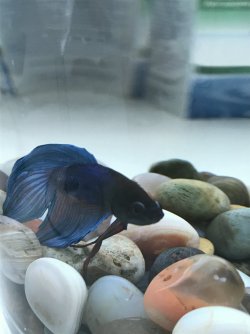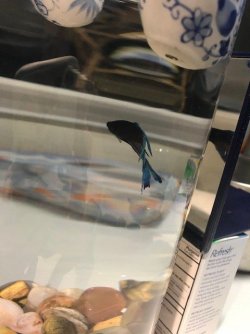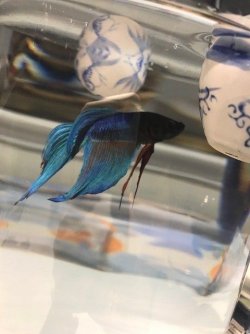onefieshcedrick
New Member
So my betta Cedrick has been skittish all month for unknown reasons- he swims away super fast when he sees my fingers and has been bubble nesting (I think) as well as maybe tail clamping (not sure). This afternoon, he was doing okay, but when I came back after dinner, his tail was in ragged tatters with maybe half of it remaining. I don't know what could possibly have caused this, except that I've had a fish net in his tank to acclimate him to it for around two weeks but left it out the last time I changed his water because I didn't feel like it was working. I have talked to my mother and we will be budgeting for a 10 gallon tank with a new, better substrate.
Before:

After:


Before:

After:




